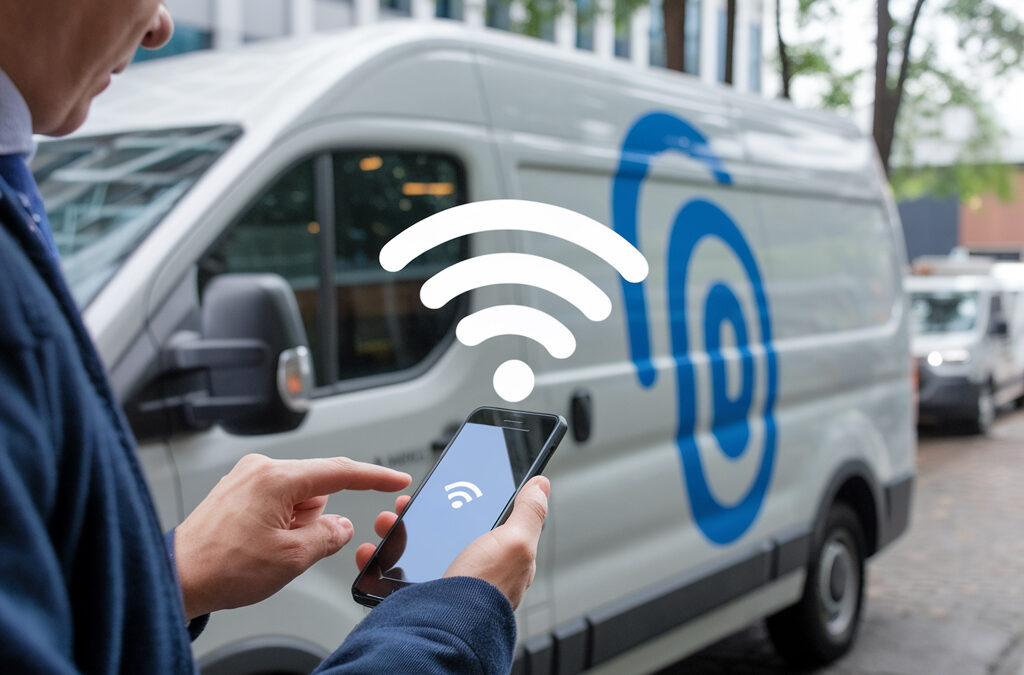In today’s increasingly connected world, the automotive industry is undergoing a significant transformation. Original equipment manufacturers (OEMs) are striving to integrate connectivity into their vehicles to enable a wide range of features and services that improve safety, efficiency, and user experience. While the concept of connected cars is gaining traction, there are several obstacles that OEMs must overcome to successfully introduce connectivity solutions into global markets. In this article, we’ll look at the challenges and potential solutions for OEMs as they embark on the journey to integrate connected car technology worldwide.

Technological challenges
Integrating connectivity into existing vehicle models can be complex. It requires careful consideration of hardware compatibility, software integration, and data management. Retrofit telematics systems in older vehicles can be particularly challenging due to limited computing power and aging infrastructure. Overcoming these technological hurdles requires significant investment in research and development to ensure seamless integration of connectivity solutions across different vehicle fleets.
Regulatory compliance
Regulations and requirements for car connectivity differ by region and country. OEMs have to navigate an intricate landscape of compliance regulations, which include anything from data privacy and security to communication methods and frequency ranges. Obtaining worldwide regulatory compliance may be a lengthy and costly process that frequently necessitates coordination with local authorities and adaptation to particular regional rules.
Infrastructure limitations
Strong infrastructure support is critical to the success of connectivity solutions. Global cellular network coverage, high-speed internet access, and dependable GPS systems are critical for seamless connectivity experiences. However, in certain regions, especially in developing countries, the infrastructure may be inadequate or unreliable. OEMs face the problem of releasing connectivity solutions in areas where the underlying infrastructure is still emerging, making it difficult for users to receive consistent and dependable services.

Cost and affordability
Connectivity solutions often require significant investment in hardware, software, and infrastructure development. Retrofit telematics systems can be expensive, especially for OEMs looking to upgrade older vehicle models. The cost of integrating connectivity into vehicles must be balanced with the value it offers consumers. Ensuring affordability and providing scalable solutions that cater to a wide range of vehicle models and price points is crucial for the widespread adoption of connected technologies.
Consumer awareness and acceptance:
The concept of connected cars may still be unfamiliar to many consumers, especially in emerging markets. Building awareness, educating consumers about the benefits, and addressing potential concerns around data privacy and security are essential for fostering acceptance and adoption. OEMs must invest in marketing efforts, consumer education campaigns, and demonstrations to promote the advantages of retrofit telematics solutions and create demand for connected vehicles.
Solutions and the way forward
To overcome these barriers, OEMs must adopt a proactive approach and implement the following strategies:
- Collaboration and partnerships: By collaborating with technology providers, telecom companies, and local governments, OEMs can effectively address infrastructure challenges and regulatory compliance. Strategic partnerships enable OEMs to tap into expertise and resources, paving the way for overcoming barriers with greater efficiency.
- Modular and scalable solutions: OEMs can develop retrofit telematics solutions that are modular and scalable, allowing for seamless integration across various vehicle models. This approach ensures that connectivity options are available across the entire product portfolio, catering to a diverse range of customers.
Paving the way for a connected future

As the automotive industry embraces the era of connectivity, OEMs face several challenges in launching connected car technology in global markets. However, these obstacles can be overcome with the right strategies and solutions. Investing in R&D enables OEMs to tackle technological complexities, ensuring seamless compatibility and functionality of connectivity in vehicles. Adhering to regional regulations and obtaining worldwide compliance requires collaboration with local authorities and adaptation to specific rules.
Infrastructure limitations can be tackled through partnerships with telecommunications companies and the development of strong network coverage. Balancing cost and affordability is crucial for widespread adoption. Educating consumers and implementing effective marketing campaigns can promote awareness and acceptance. By adopting proactive approaches and collaborative solutions, OEMs can overcome barriers and shape a connected future in the automotive industry.
Overcoming these barriers and deploying connectivity across major brands
Third-party firms are crucial to eliminating connectivity deployment barriers. These auto-tech companies, such as Connected Cars, have the expertise and creativity to push connectivity solutions. They bring agile and innovative capabilities to OEMs, which may be limited by their size and structure. They quickly adjust to industry developments and consumer needs and can help OEMs tackle the different obstacles to connectivity implementation.
Technological challenges
Partnering up with companies that have the technological know-how OEMs may lack in the area of connectivity is crucial. While OEMs excel at manufacturing vehicles, they may not have the same level of expertise when it comes to the complex technological challenges of telematics systems. Connected Cars’ agile approach ensures system compatibility, while their data science team extracts valuable insights from raw vehicle data. This enables OEMs to overcome the complexities of retrofit telematics and achieve unified connectivity across various vehicle models.
Regulatory compliance
Specialized knowledge and proficiency in privacy and security compliance for connectivity solutions save OEMs a significant amount of money. OEMs trust Connected Cars’ compliance with industry standards and laws due to their secure data transfer systems. Collaborating with them ensures access to ongoing R&D efforts, continual upgrades, and advancements to meet privacy and security needs. This cooperation ensures compliance, data privacy, and enables OEMs to focus on core strengths while delivering top-tier connectivity solutions.
Infrastructure limitations

The advantage of involving third-party specialists is their ability to foster collaboration and synergy within the automotive ecosystem. These companies have global partnerships with software developers, telecom providers, and data analytics firms, enabling OEMs to access diverse resources, technologies, and expertise for comprehensive telematics solutions. Connected Cars’ successful implementations with various OEMs across brands and vehicle models demonstrate their ability to deliver connectivity solutions despite local infrastructure limitations.
Cost and affordability
OEMs often face significant challenges when it comes to the research and development (R&D) as well as implementation costs of connectivity solutions, especially if they lack expertise in this particular area. However, it’s cost-effective to implement a readily available solution with trusted connectivity solution providers like ConnectedCars. By partnering with experienced companies, OEMs can save on upfront investment costs while still delivering exceptional connectivity experiences to their customers. This collaboration allows OEMs to focus on their core competencies while benefiting from the industry expertise and tailored solutions offered by specialists like ConnectedCars. As a result, OEMs can provide affordable connectivity solutions that drive widespread adoption, foster enhanced customer loyalty, and generate increased revenue for the aftersales segment.
Consumer awareness and acceptance
It is imperative for OEMs to implement connectivity solutions that prioritize user experience to tackle the challenge of consumer awareness and acceptance. This entails investing in solutions that are developed with customer and market research as fundamental components. By adopting such an approach, OEMs can ensure their connectivity solutions align with customer needs and preferences. Notably, Connected Cars’ established solutions have demonstrated an impressive adoption rate of 98% and have garnered a substantial increase in five-star customer reviews for dealerships. These outcomes serve to amplify consumer acceptance and overall satisfaction, highlighting the effectiveness of user-focused connectivity solutions.
About Connected Cars

Connected Cars provides a complete product suite consisting of easily deployable hardware, software, and APIs.
Connected Cars’ product suite offers a scalable solution for OEMs facing technological, regulatory, and market challenges in connected car technology. It has a successful track record with major OEMs like Volkswagen, Audi, Seat, Skoda, and Cupra. They connected nearly 300,000 vehicles worldwide and accumulating over 375,000 app downloads, demonstrating its significant global influence.
The fusion of diagnostic tester-grade telematics data and industry-specific, user-focused front-ends within Connected Cars yields a dynamic suite of connectivity products: ConnectedWorkshop, MyConnectedCar app, CC-DataStream, CC-Link, and ConnectedFleet. Collectively, they create an ecosystem that surmounts the obstacles encountered by OEMs in deploying connectivity on a global scale.






